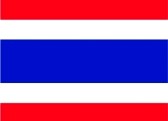All Categories
*Price and Stocks may change without prior notice
*Packaging of actual item may differ from photo shown
- Electrical items MAY be 110 volts.
- 7 Day Return Policy
- All products are genuine and original








About Birds Of Utah Field Guide
Product Description Learn to Identify Birds in Utah! Make bird watching in Utah even more enjoyable! With Stan Tekiela’s famous field guide, bird identification is simple and informative. There’s no need to look through dozens of photos of birds that don’t live in your area. This book features 130 species of Utah birds, organized by color for ease of use. Do you see a yellow bird and don’t know what it is? Go to the yellow section to find out. Fact-filled information, a compare feature, range maps, and detailed photographs help to ensure that you positively identify the birds that you see. About the Author Naturalist, wildlife photographer and writer Stan Tekiela is the originator of the popular state-specific field guide series. Stan has authored more than 190 educational books, including field guides, quick guides, nature books, children’s books, playing cards and more, presenting many species of animals and plants. With a Bachelor of Science degree in Natural History from the University of Minnesota and as an active professional naturalist for more than 30 years, Stan studies and photographs wildlife throughout the United States and Canada. He has received various national and regional awards for his books and photographs. Also a well-known columnist and radio personality, his syndicated column appears in more than 25 newspapers, and his wildlife programs are broadcast on a number of Midwest radio stations. Stan can be followed on Facebook and Twitter. Excerpt. © Reprinted by permission. All rights reserved. Mountain Bluebird Sialia currucoides Size: 7" (18 cm) Male: An overall sky blue bird with a darker blue head, back, wings and tail and white lower belly. Thin black bill. Female: similar to male, but paler with a nearly gray head and chest and a whitish belly Juvenile: similar to adult of the same sex Nest: cavity, old woodpecker cavity, wooden nest box; female builds; 1-2 broods per year Eggs: 4-6; pale blue without markings Incubation: 13-14 days; female incubates Fledging: 22-23 days; female and male feed young Migration: complete, to Arizona, California, Mexico Food: insects Compare: Similar to Western Bluebird (pg. 61), but not as dark blue and lacks Western's rusty red chest. Same size as male Blue Grosbeak (pg. 59), but lacks the Grosbeak's chestnut-colored wing bars and oversized bill. Stan’s Notes: Common in open mountainous country, this bird nests throughout Utah. Due to conservation of suitable nest sites (dead trees with cavities and man-made nest boxes), populations have increased dramatically over the last 50 years. Like other bluebirds, Mountain Bluebirds take well to nest boxes and tolerate close contact with humans. Young will imprint on their first nest box or cavity, then choose a similar type of box or cavity throughout the rest of life.




















